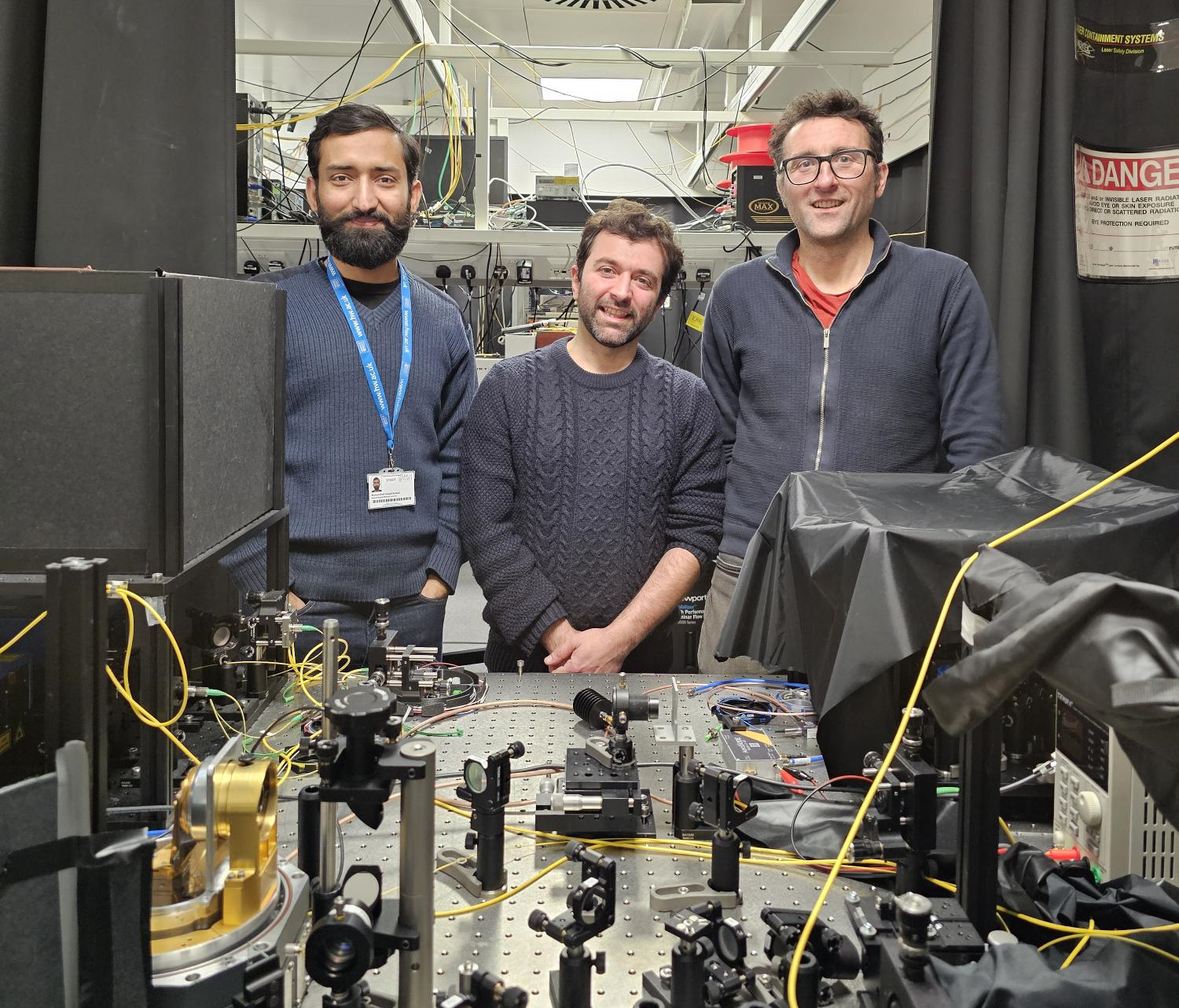Scientists at Heriot-Watt University in Edinburgh have solved one of the fundamental problems facing quantum networking.
 Heriot-Watt scientists, from left to right, Dr Muhammad Junaid Arshad, Dr Pasquale Cilibrizzi and Professor Cristian Bonato Image Credit: Heriot-Watt University
Heriot-Watt scientists, from left to right, Dr Muhammad Junaid Arshad, Dr Pasquale Cilibrizzi and Professor Cristian Bonato Image Credit: Heriot-Watt University
Professor Cristian Bonato, co-lead of Heriot-Watt’s Quantum Photonics Laboratory, worked with colleagues across Europe on the breakthrough.
At present, quantum networks rely on expensive lasers and additional equipment to make single atoms ‘talk’ to each other using light - a crucial requirement for quantum communication to work, and one which ensures all communication remains secure.
Bonato and team developed a new semiconductor system with single atoms that automatically all emit light at the same frequency, removing the need for additional equipment and reducing significant costs.
The breakthrough is reported in Nature Communications.
Futureproofing Communication
While internet connections are enabled by pulses of light travelling along a fibre cable, quantum networks use single particles of light, called photons, and single atoms.
This means quantum networks can provide completely secure, unhackable communication channels. They use the rules of physics to provide constant monitoring - any attempt to intercept or eavesdrop on a channel will be detected, by disturbing the fragile single photons.
Helping Single Atoms Talk to Each Other
Professor Cristian Bonato said: “Semiconductors are very appealing for quantum communications. They use chips similar to those we find in mobile phones and computers, which means we already have the manufacturing capability in place.
“Small-scale variations in the semiconductor mean the atoms all emit light at slightly different frequencies.
“This is a big issue for quantum communication since it means the atoms cannot talk to each other - it’s like having your radio receiver tuned at a different frequency than the transmitter: no signal reception is possible.
“Until now, this problem has been solved by using extra lasers and complex frequency-conversion equipment, which is very expensive and makes quantum a less attractive proposition.”
Bonato and colleagues decided to add vanadium atoms to the semiconductor. Vanadium is mostly used to make extremely strong steel alloys, for use in tools or armour plating.
The scientists decided to experiment with vanadium because it emits light at a frequency compatible with standard telecommunication optical fibre networks - removing the need for new fibre to be laid down, which would be a major expense for any organisation that wanted to move to quantum networking.
The researchers implanted single vanadium atoms into silicon carbide, a semiconductor comprising a lattice of silicon and carbon atoms.
“A Tiny Antenna”
Bonato said: “Each vanadium atom acts like a tiny antenna, which emits light at a given frequency.
“This antenna can perturbed when heavier atoms are sitting nearby. For example, in nature, some silicon atoms are heavier than normal, as they host an additional neutron. A heavier atom nearby compresses the antenna, making it emit light at a slightly different frequency. We solved this problem by growing our semiconductor using identical silicon and carbon atoms.”
Bonato says the finding heralds a breakthrough in quantum communications.
“We now have a network of single atoms all operating at exactly the same optical frequency, in the telecommunication range. Therefore these atoms can now talk to each other and transmit quantum information.
“Using silicon carbide was intentional. It’s widely used in the electric vehicle industry, so there are already standard manufacturing processes and knowledge of the material in place - that’s a huge saving on investment, compared to using a novel material.
“Data is the new currency and we need quantum networks to keep it secure. Our breakthrough will help accelerate the adoption of quantum networks and increase the security of our communications.”
Bonato worked with colleagues at Heriot-Watt University and collaborators in Germany, Austria and Sweden on the research.
He said: “This multi-national collaboration was essential as this research could only be carried out with the participation of experts in different fields, from the growth of high-purity semiconductor materials to the development of sophisticated measurements of small frequency shifts in optical emission from single atoms to theoretical modelling of the quantum properties of single vanadium atoms.”
The research was funded by the European Commission and the UK Engineering and Physical Sciences Research Council (EPSRC).